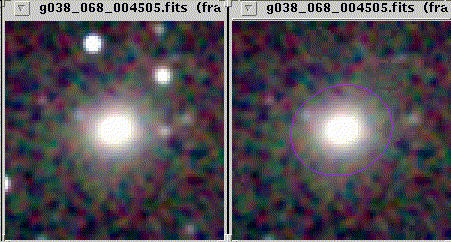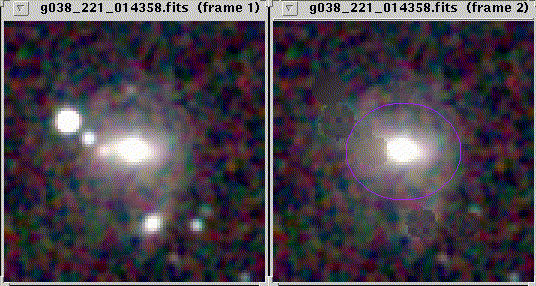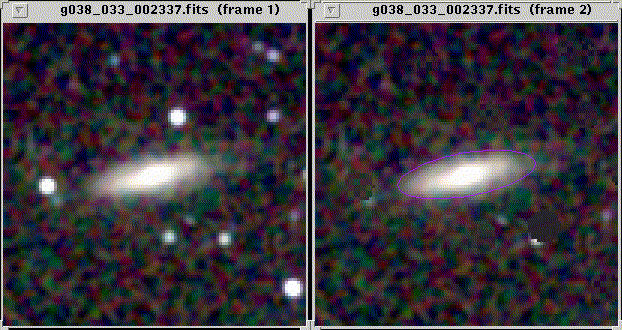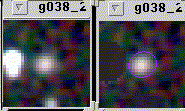GALWORKS Modifications and Performance
The extended source processor (GALWORKS) has been modified to run
optimally with the 2MASS 6X survey scans. The changes and initial
performance are given here.
High Level Modifications
- adjust mag thresholds in namelist; the 6X thresholds
are adjusted 1 mag fainter in comparison to 1X.
- eliminate NED seedlist
- add XSC seedlist
- eliminate JCAT (bright star) seedlist
- add PSC bright star seedlist
- adjust (tune) bright star masking parameters
(effectively increasing the mask radii)
- adjust confusion noise and stellar number density thresholds
- adjust S/N thresholds
- eliminate E/G-score thresholding
- fix 1X bug that (on rare occasions) corrupted isophotal radii
- add photometric analysis and diagnostic tables, comparing
1X and 6X results; file = "log###.gal"
For the most part, mag thresholds are 1 mag fainter for 6X in
comparison to 1X. The bright star confusion radii were increased
by a factor that was determined using about a couple dozen bright stars from
different scans. This 1X to 6X scaling is straight forward and
its performance is satisfactory thus far.
The XSC seedlist allows not only direct comparison with 1X and
6X photometry, but also supports background removal, and
target preference (i.e., the order in which the candidate targets
are processed). The PSC seedlist identifies bright stars and
necessitates the elimination of the problematic JCAT catalog.
Caveats:
GALWORKS-6X is not modified or tuned to properly process
very large galaxies. Since large galaxies are handled by
the LGA processing, the 6X pipeline is not necessary. It remains
to be seen if the pipe breaks when crossing a Messier object.
Likewise, very bright stars (Mag < 0.) may also break the pipe.
Performance
As of April 25, GALWORKS-6X is running in the full 2MAPS-6X pipeline.
The pipe will undergo further minor modifications, but is
currently (preliminary
stages)
producing very good results. A few highlights are given below
for scan "038" of 010110s.
Background Removal
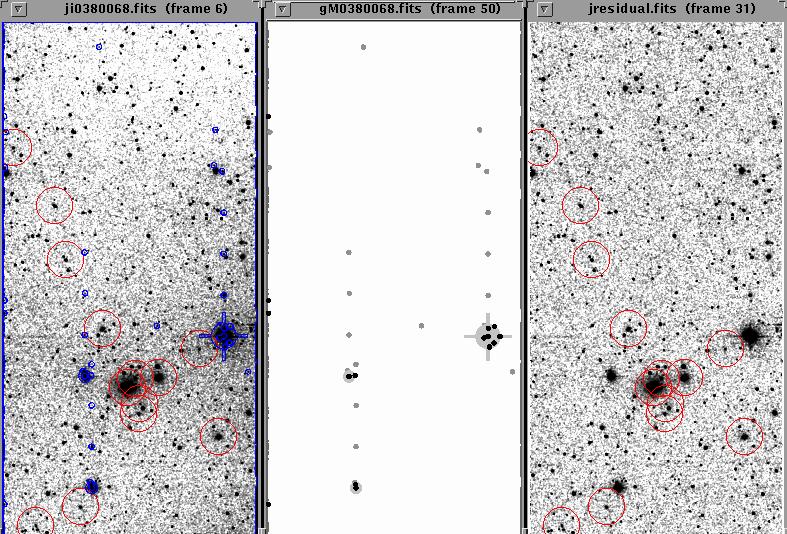
J-band Coadd Image with extended sources marked in red and
bright stars artifacts and masked area marked in blue. The left panel shows
the raw image. The middle panel shows the "mask", and the
right panel shows the residual (background-removed) image.
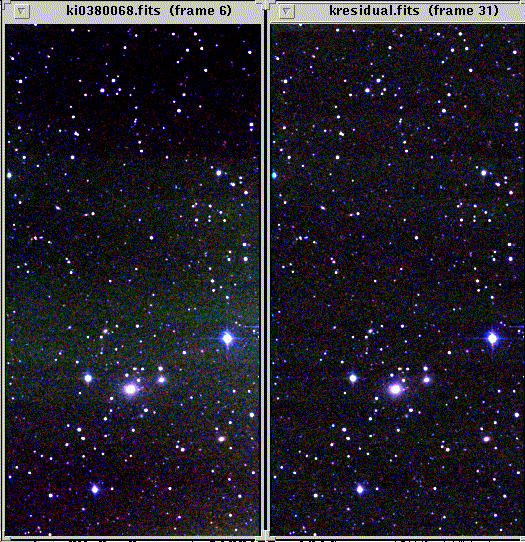
J,H, and Ks color version where the left panel shows the raw coadd(s)
and the right panel shows the residual (background-removed) coadd(s).
Bright Star Removal -- the horror!
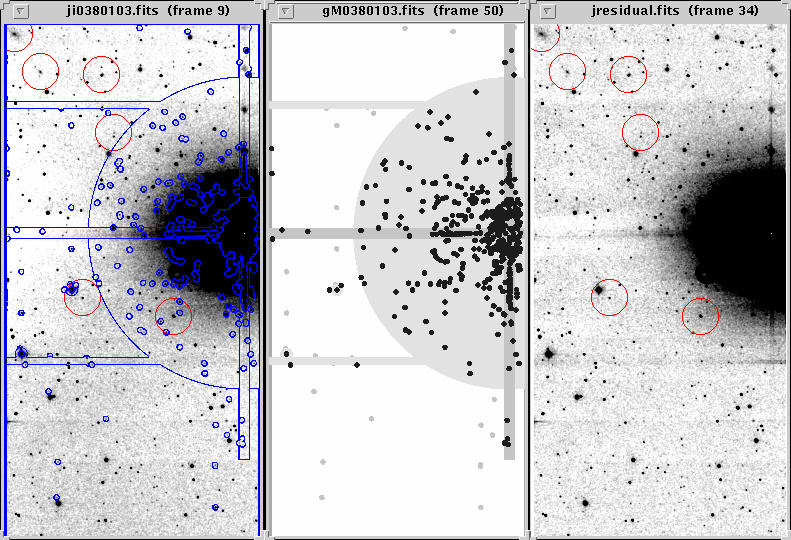
J-band Coadd Image with extended sources marked in red and
bright stars artifacts and masked area marked in blue. The left panel shows
the raw image. The middle panel shows the "mask", and the
right panel shows the residual (background-removed) image.
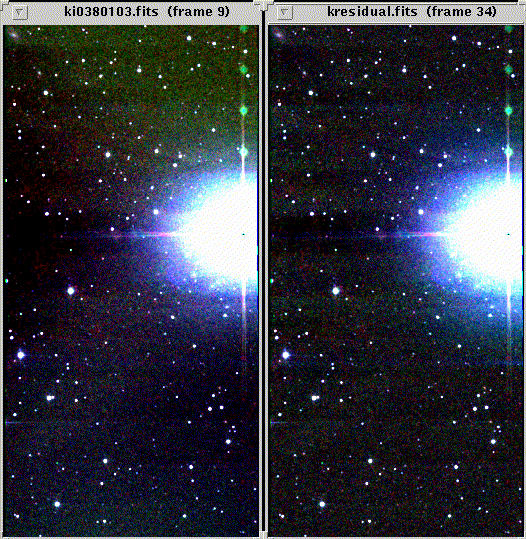
J,H, and Ks color version where the left panel shows the raw coadd(s)
and the right panel shows the residual (background-removed) coadd(s).
Extended Sources
The following images show examples of extended sources extracted
by GALWORKS-6X. The left panel shows the 3-color, background removed
"postage stamp" image. The right panel shows the same image
with stars removed. The Ks-band (fiducial) elliptical isophotal radius is shown
in blue.
Photometry: 1X vs. 6X
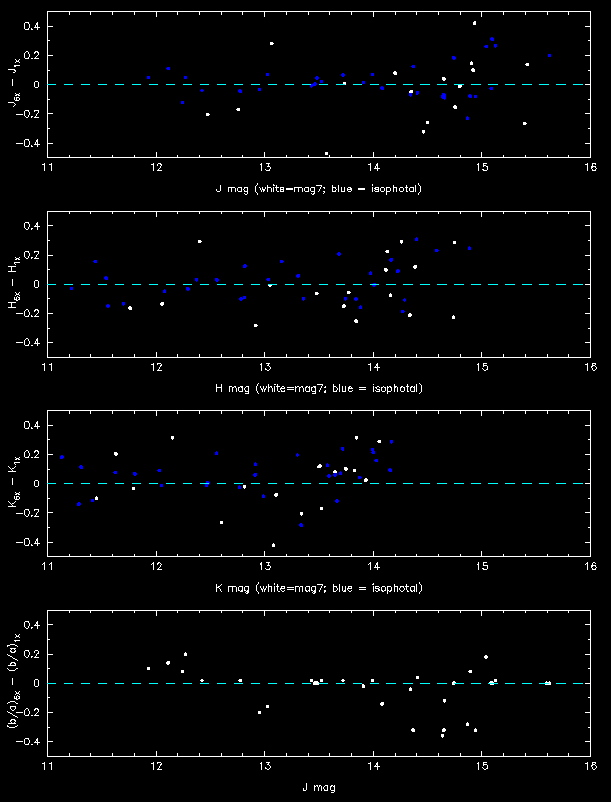
The upper panel shows the J mag results, the next panel the H mag results,
the next panel the Ks mag results, and the bottom panel the
axis ratio results. Denoted in blue are the (fiducuial) isophotal results
and in white are the fixed, radius=7 circular aperture results.
The photometric scatter is ~10% (J < 15th mag), with little if any
systematic bias. The elliptical shape (axis ratio) is also consistent
between 1X and 6X, with between 5 to 10% scatter. Overall, the results look
satisfactory for this scan. The definitive test will include at least
an order of magnitude more data points. A combination of many scans
should be analyzed.
[Last Updated: 2003 May 5; by Tom Jarrett]




